Paestum, an ancient Greek city, has long captivated the imagination of travelers and historians alike. Nestled along the Tyrrhenian coast, this archaeological wonder unveils a tapestry of cultural sophistication that transcends the ages. From the iconic Doric temples to the well-preserved necropolises, each step in Paestum’s journey offers a glimpse into the past, inviting visitors to unravel the mysteries that lie within. Whether you’re drawn to the architectural marvels, the artistic treasures, or the evolving cultural landscape, Paestum’s allure is undeniable. Prepare to embark on an extraordinary adventure that will leave you captivated by the enduring legacy of this ancient city.
Key Points
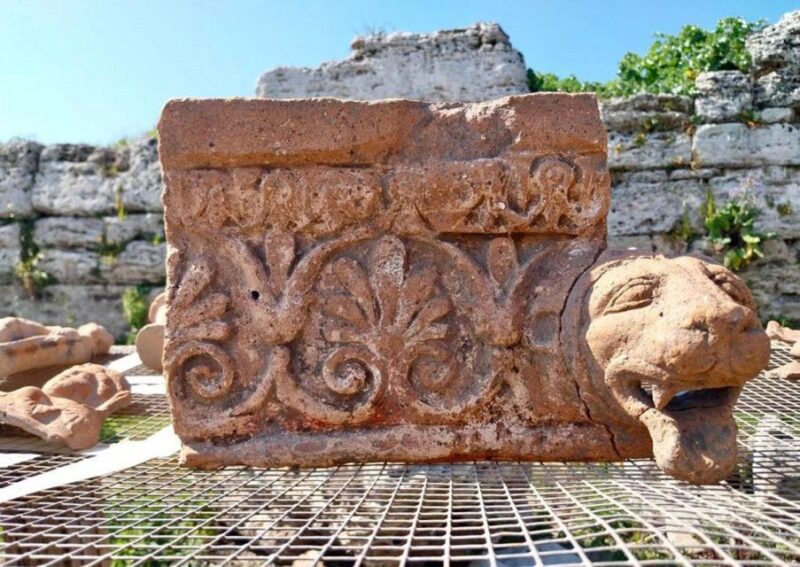
- Explore the well-preserved Greek temples of Paestum, including the iconic Temple of Hera, Temple of Neptune, and Temple of Athena.
- Immerse in the artistic sophistication of Paestum through its intricate mosaics, vibrant frescoes, and exceptional marble carvings.
- Uncover the evolution of Paestum’s cultural landscape, from its Greek origins to Roman influences and medieval transformations.
- Discover the insights into ancient burial customs and social structures through the exquisite necropolises and funerary objects.
- Plan a comprehensive Paestum excursion with the help of English and Italian-speaking guides and flexible tour packages.
Exploring Poseidonia’s Greek Heritage
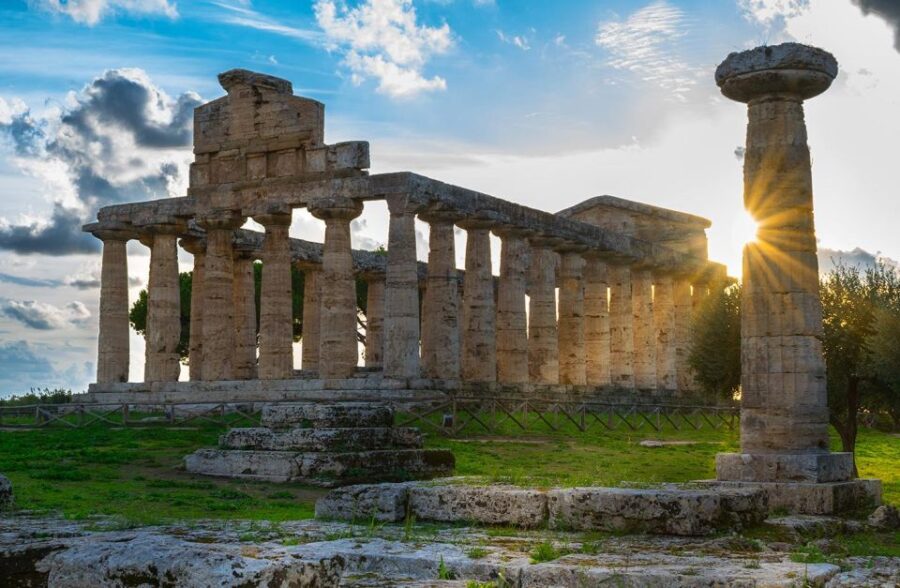
Tracing its origins to ancient Greek settlers, Paestum – known as Poseidonia in antiquity – offers visitors a captivating glimpse into the architectural and cultural achievements of the Hellenic world.
The three iconic Greek temples that dominate the landscape are a testament to the city’s prosperous past. The Temple of Hera, one of the oldest Doric temples, and the Temple of Neptune, known for its massive columns, exemplify the engineering prowess of the ancient Greeks.
Exploring the intricately decorated mosaics, frescoes, and artifacts also reveals the artistic sophistication of Poseidonia’s inhabitants.
Immersing oneself in this well-preserved Greek heritage transports visitors back to a time when Magna Graecia thrived along the Tyrrhenian Sea.
You can also read our reviews of more tours and experiences in Paestum.
Architectural Marvels of Paestum
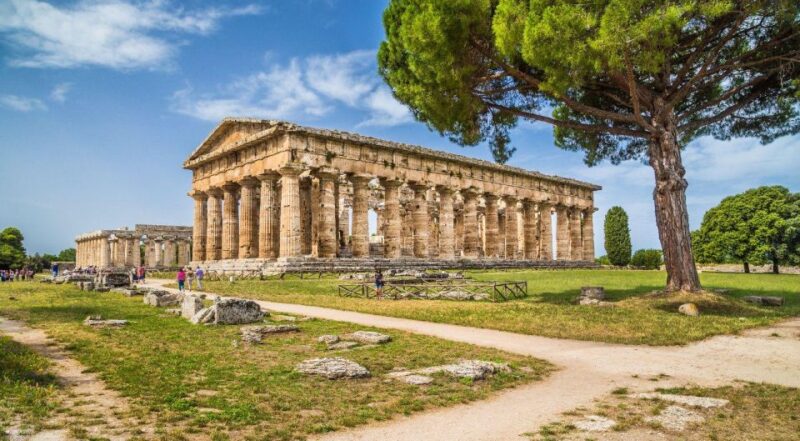
The three iconic Greek temples of Paestum dominate the archaeological site, showcasing the architectural marvels of the ancient Hellenic world. These magnificent structures, dating back to the 6th century BC, stand as testaments to the engineering prowess and artistic vision of the Greek settlers.
Visitors can marvel at the massive columns of the Temple of Neptune, the intricate details of the Temple of Athena, and the well-preserved grandeur of the Temple of Hera. These temples not only served as religious centers but also embodied the cultural and political significance of Paestum during its heyday as a thriving city-state in Magna Graecia.
-
Explore the imposing columns and pediments of the temples
-
Discover the fusion of Doric and Ionic architectural styles
-
Imagine the vibrant rituals and ceremonies that once took place here
-
Gain insights into the advanced construction techniques of the ancient Greeks
Uncovering Paestum’s Artistic Treasures
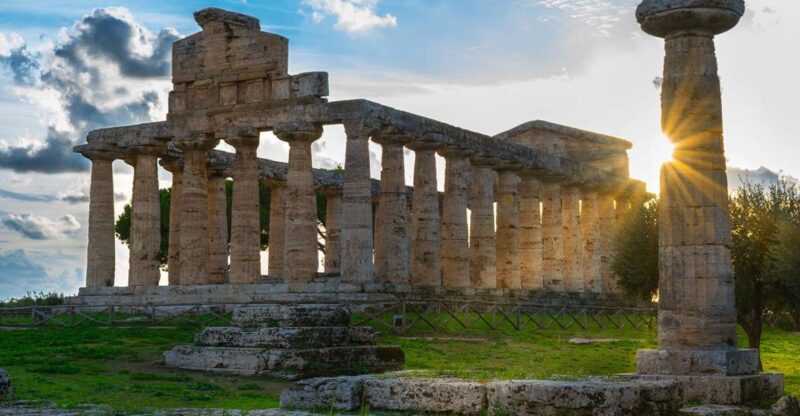
Beyond the awe-inspiring temples, Paestum’s archaeological treasures unveil a rich tapestry of artistic achievements that captivate visitors.
Intricate mosaics, vibrant frescoes, and meticulously crafted artifacts showcase the city’s cultural sophistication and the ingenuity of its ancient inhabitants.
Ornate marble carvings and delicate glassware provide a glimpse into the everyday lives of Paestum’s residents.
The treasures discovered within the city’s necropolises, such as exquisite funerary objects and ornaments, offer a poignant reminder of the profound respect and reverence the Paestanians held for their departed.
Exploring these artistic wonders allows visitors to truly enjoy the vibrant cultural landscape of this remarkable ancient Greek settlement.
Paestum’s Evolving Cultural Landscape
Paestum’s cultural landscape has evolved considerably over the centuries, reflecting the diverse influences that have shaped this ancient Greek settlement. From its original Greek foundations to the later Roman and medieval periods, Paestum’s architectural and artistic heritage continues to captivate visitors.
Key elements of its evolving cultural identity include:
-
The integration of Doric, Ionic, and Roman architectural styles across its temples, public buildings, and residential structures.
-
The interplay between Greek, Roman, and Byzantine cultural elements in the site’s mosaics, frescoes, and artifacts.
-
The site’s transformation from a thriving city-state to a medieval stronghold and eventually a UNESCO World Heritage site.
-
The site’s enduring significance as a testament to the region’s rich history and a hub for archaeological exploration and preservation.
Visiting the Necropolises of Paestum
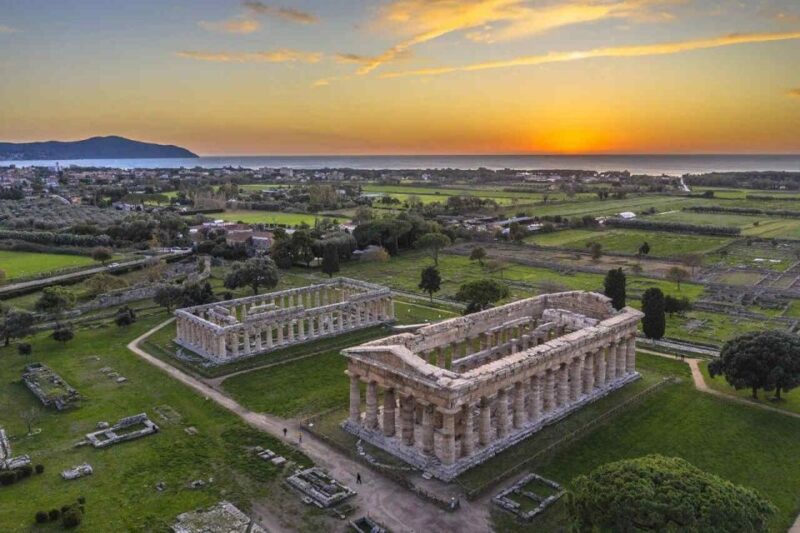
While the iconic temples of Paestum command the attention of many visitors, the site’s necropolises offer a unique glimpse into the burial customs and social structures of this ancient Greek settlement.
Spread across the landscape, the necropolises contain a wealth of elaborately decorated tombs and sarcophagi, providing insights into the beliefs and practices surrounding death and the afterlife.
Visitors can explore the different sections, which often reflect the social status and wealth of the interred. From the grand mausoleums of the elite to the more modest graves of the common people, these sites paint a vivid picture of Paestum’s vibrant and multilayered society.
Exploring the necropolises is a must for anyone seeking to fully enjoy the rich history of this remarkable ancient city.
- Herculaneum, Pompeii and Paestum Private Day Tour From Rome
- Naples: Go to Paestum by Car and Visit the Temples
- Paestum Archaeological Tour: 3-Hour Private Exploration
- Paestum: Temples and Museum Tour With Archaeologist Guide
- Paestum: Small-Group Tour With an Archaeologist and Tickets
- From Naples: Paestum Day Trip With Mozzarella Tasting
Discovering Ancient Paestum: Journey Through Time
One can explore Paestum’s remarkably well-preserved ancient city walls, which offer a unique perspective on the site’s fortifications and the city’s historical development.
As visitors wander along the walls, they can:
-
Marvel at the impressive scale and craftsmanship of the defensive structures, which stretch for over 5 kilometers and reach up to 10 meters in height.
-
Imagine the strategic importance of these walls, which protected Paestum from invaders for centuries.
-
Enjoy panoramic views of the surrounding landscape, including the iconic Greek temples and the distant Tyrrhenian Sea.
-
Gain a deeper understanding of the city’s evolution, from its Greek origins to its later Roman and medieval influences.
Discovering Paestum’s Roman Influence
Alongside the Greek architectural wonders, Paestum’s Roman legacy stands as a testament to the city’s evolving cultural landscape.
During the Roman conquest, the once-Greek settlement was transformed, with the construction of grand civic structures. The imposing Forum served as the commercial and administrative heart of the city, while the well-preserved amphitheater hosted lively entertainment and spectacles.
Evidence of Roman baths and residential areas further showcase how Paestum adapted to its new rulers.
Exploring these Roman ruins provides a fascinating glimpse into the city’s transition from a Greek polis to a thriving Roman municipality. Visitors can wander the ancient streets, imagining the bustling activity that once filled this remarkable archaeological site.
Planning Your Paestum Excursion
As visitors explore Paestum’s captivating Greek and Roman ruins, planning an excursion to this remarkable archaeological site is key to maximizing their experience.
Travelers can start by considering the duration of their visit, with a typical tour lasting around 4 hours and allowing ample time to enjoy the site’s history and architectural wonders.
To enhance the experience, visitors can consider the following:
-
Opting for small group tours (8 participants or less) to enjoy a more personalized exploration.
-
Choosing guides fluent in both English and Italian to gain a deeper understanding of the site.
-
Ensuring flexibility with free cancellation options up to 24 hours prior to the tour.
-
Selecting tour packages that include transport, bottled water, and all taxes for a seamless experience.
Frequently Asked Questions
How Long Does It Take to Explore the Entire Archaeological Site?
According to the provided information, it takes approximately 4 hours to fully explore the archaeological site of Paestum. The overview notes that visitors can experience the site within this duration, with small groups limited to 8 participants.
Is the Site Accessible for Visitors With Disabilities?
Paestum’s archaeological site offers good accessibility for visitors with disabilities. It has paved walkways, ramps, and designated parking. Guided tours can be customized to accommodate individual needs. However, some uneven terrain may pose challenges for those with limited mobility.
Can Visitors Take Photographs Within the Ancient Ruins?
Visitors can take photographs within the ancient ruins at Paestum. Photography is generally permitted throughout the archaeological site, allowing visitors to capture the well-preserved Greek temples and other historical structures during their exploration.
What Is the Best Time of Year to Visit Paestum?
The best time to visit Paestum is during the spring or fall when the weather is mild and crowds are smaller. Summers can be hot and crowded, while winters may have reduced hours and fewer services available.
Are There Any On-Site Dining or Shopping Options Available?
There are dining options within the Paestum archaeological site, including a restaurant serving traditional Campanian cuisine. However, there are no dedicated shopping facilities on-site. Visitors can purchase souvenirs in the nearby town.
Recap
Visiting Paestum is a captivating journey through the ages.
Travelers can marvel at the well-preserved Greek temples, explore the ancient necropolises, and discover the city’s evolution from Greek to Roman influence.
Each step offers a glimpse into the cultural sophistication of this remarkable archaeological site, making it a must-visit destination for those eager to enjoy the rich heritage of the past.
You can check if your dates are available here:More Tour Reviews in Paestum
Not for you? Here's more things to do in Paestum we have recnetly reviewed
- 4 Best Guided Tours In Paestum
- 2 Best Private Car With Driver Services In Paestum
- 11 Best Tours In Paestum
- Mozzarella Experience: Tour + Lunch in Paestums Dairy
- SALERNO: Guided Visit at Paestum Ruins and Museum
- SALERNO: Paestum & Mozzarella Experience • Shore Excursion
- Visit a Village by E-Bike and Taste the Excellent Wine
- Paestum: 2-Hour Greek Temples & Archaeological Museum
- Amalfi Coast Airport Transfer to Paestum
- Paestum: Transfer to Amalfi Coast Airport
- Paragliding Flight in Paestum
